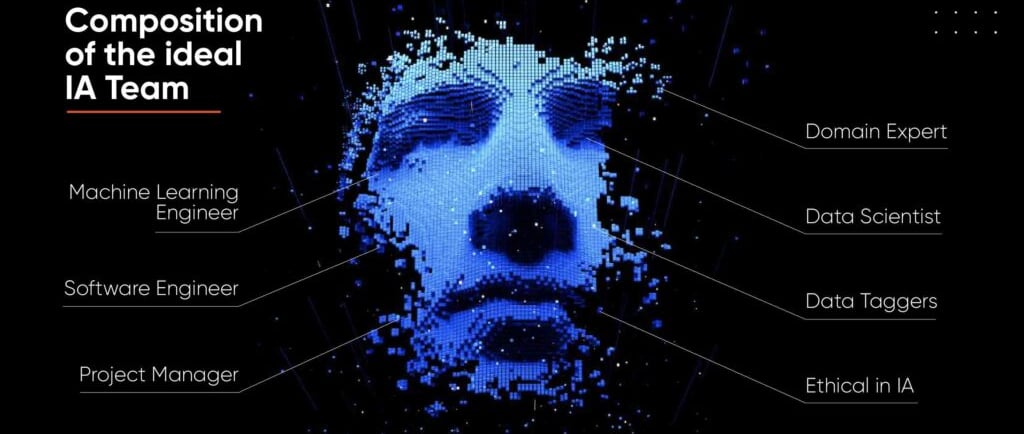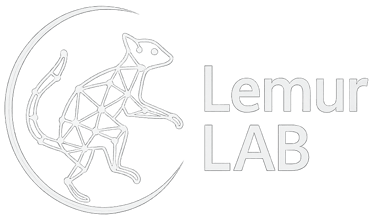Glossary of terms


AI glossary for business readers
Algorithm – a set of rules or instructions given to an AI system to help it solve problems or make decisions.
Artificial Intelligence (AI) – the field of computer science that builds systems capable of tasks that usually require human intelligence, such as understanding language, recognizing patterns, or making decisions.
Bias (in AI) – systematic error in AI decision-making, often resulting from biased training data, which can lead to unfair or inaccurate outcomes.
Chatbot – a software application that uses AI to simulate human conversation, often used in customer service or sales.
Computer Vision – a field of AI that enables machines to interpret and process visual information from the world, such as images or video.
Data Labeling – the process of tagging or annotating data (e.g., images, text) to help train AI models by teaching them what patterns to recognize.
Deep Learning – a subset of machine learning that uses neural networks with many layers to analyze complex data, such as audio, images, or text.
Generative AI – a type of AI that creates new content, such as text, images, or music, by learning from existing examples.
GPT (Generative Pre-trained Transformer) – a large language model developed by OpenAI that can generate human-like text, answer questions, or assist with tasks.
Inference – the process by which an AI system applies its trained model to new, unseen data to make predictions or decisions.
Large Language Model (LLM) – a powerful AI model trained on massive text datasets to understand and generate natural language.
Machine Learning (ML) – a branch of AI where systems learn from data rather than being explicitly programmed for every task.
Model Training – the process of teaching an AI model to make predictions or decisions by feeding it labeled data.
Natural Language Processing (NLP) – the area of AI focused on enabling machines to understand, interpret, and generate human language.
Neural Network – a system of algorithms modeled after the human brain that enables AI to recognize patterns and make decisions.
Prompt – an instruction or input given to a generative AI system (like GPT) to guide its response.
Reinforcement Learning – a type of machine learning where an AI learns by receiving rewards or penalties for the actions it takes.
Supervised Learning – a type of machine learning where the model is trained on labeled data, meaning the correct answers are already known.
Token (in NLP) – a unit of text, such as a word or subword, used in the processing of language by AI models.
Training Data – the dataset used to teach an AI model how to recognize patterns and make predictions.
VoIP SIP terms
Auto Attendant – a virtual receptionist that answers calls and routes them to the right department or person without human intervention.
Bandwidth – the amount of data that can be transmitted over an internet connection in a given time, affecting VoIP call quality.
BYOD (Bring Your Own Device) – a policy allowing employees to use their personal devices (e.g., smartphones) for business communications, often integrated with VoIP apps.
Call Forwarding – a feature that redirects incoming calls to another number, such as a mobile phone or colleague’s extension.
Call Recording – the process of saving voice conversations, often used for training, compliance, or customer service quality control.
Codec – a technology that compresses and decompresses voice data to optimize quality and bandwidth usage during VoIP calls (e.g., G.711, G.729).
DID (Direct Inward Dialing) – a phone number that rings directly to a specific VoIP extension without going through a menu or operator.
DTMF (Dual-Tone Multi-Frequency) – the tones generated when you press telephone keys, used to interact with automated systems.
Endpoint – any device that connects to a VoIP system, such as an IP phone, softphone, or VoIP-enabled mobile app.
Hosted PBX – a cloud-based phone system where the service provider hosts and manages all call routing and features.
IP Phone – a physical telephone designed to work over the internet using VoIP protocols instead of traditional phone lines.
IVR (Interactive Voice Response) – an automated phone system that allows callers to interact with a menu using voice or keypad input.
Jitter – variability in the arrival time of voice packets, which can cause poor audio quality in VoIP calls.
Latency – the delay between speaking and the other person hearing your voice, which can impact the natural flow of conversation.
Packet Loss – when some voice data packets fail to reach their destination, leading to choppy or missing audio.
PBX (Private Branch Exchange) – a private phone network used within a company that manages internal and external calls.
PoE (Power over Ethernet) – technology that allows IP phones to receive both power and internet connection through a single Ethernet cable.
SIP (Session Initiation Protocol) – a standard protocol used to start, manage, and end VoIP calls over the internet.
Softphone – software that turns a computer or mobile device into a phone using VoIP technology.
VoIP (Voice over Internet Protocol) – a technology that enables voice calls to be made over the internet instead of traditional phone lines.


LangChain and AI agents glossary for business readers
Agent (AI Agent) – a component of an AI system that can make decisions, use tools, and carry out multi-step tasks based on a goal, often acting autonomously.
Chain – a sequence of steps or calls that an AI model follows to process input and deliver a result; for example, first extract data, then analyze it.
Context Window – the amount of information (tokens) an AI model can “remember” or process at once; crucial for long conversations or documents.
Embeddings – numerical representations of text or data used to help the AI understand meaning and find similar items (e.g., for search or categorization).
Function Calling (Tool Use) – the ability of a language model to call external tools or APIs during its reasoning, such as searching a database or checking a calendar.
LangChain – an open-source framework that connects language models with tools, APIs, and data sources, allowing developers to build complex, goal-driven AI apps.
LLM (Large Language Model) – the core engine behind many LangChain workflows; a powerful model like GPT-4 that understands and generates human-like text.
Memory (in agents) – a system that allows AI agents to remember past interactions or facts, enabling more personalized or context-aware responses.
Multi-modal Agent – an AI agent that can work with multiple types of data, like text, images, or voice, to perform tasks or answer questions.
Prompt Template – a structured way of building dynamic prompts with variables (e.g., "Summarize this: {text}"), which makes AI outputs more predictable and reusable.
Retriever – a component that searches for the most relevant documents or data from a larger knowledge base, often used before AI generates an answer.
ReAct Pattern (Reasoning + Acting) – an approach where an AI agent reasons step-by-step, chooses a tool to act, and then continues based on the result — useful in complex tasks.
RAG (Retrieval-Augmented Generation) – a method where the AI first retrieves relevant documents, then uses them to generate a more accurate and informed response.
Tool – an external function or service (like a calculator, web search, or CRM) that an AI agent can use to complete tasks.
Tool Agent – a type of agent specifically designed to choose and use tools (like APIs or functions) to answer questions or perform operations.
Vector Store – a database that stores embeddings, allowing the AI to search for and retrieve information based on meaning, not just keywords.
Lemur LAB
© 2025. All rights reserved
Partner with our AI research lab
Join us at the frontier of machine intelligence. Share your idea or challenge in the form, and we’ll reach out to co-create pioneering research, rapid prototypes, and real-world solutions—together.
